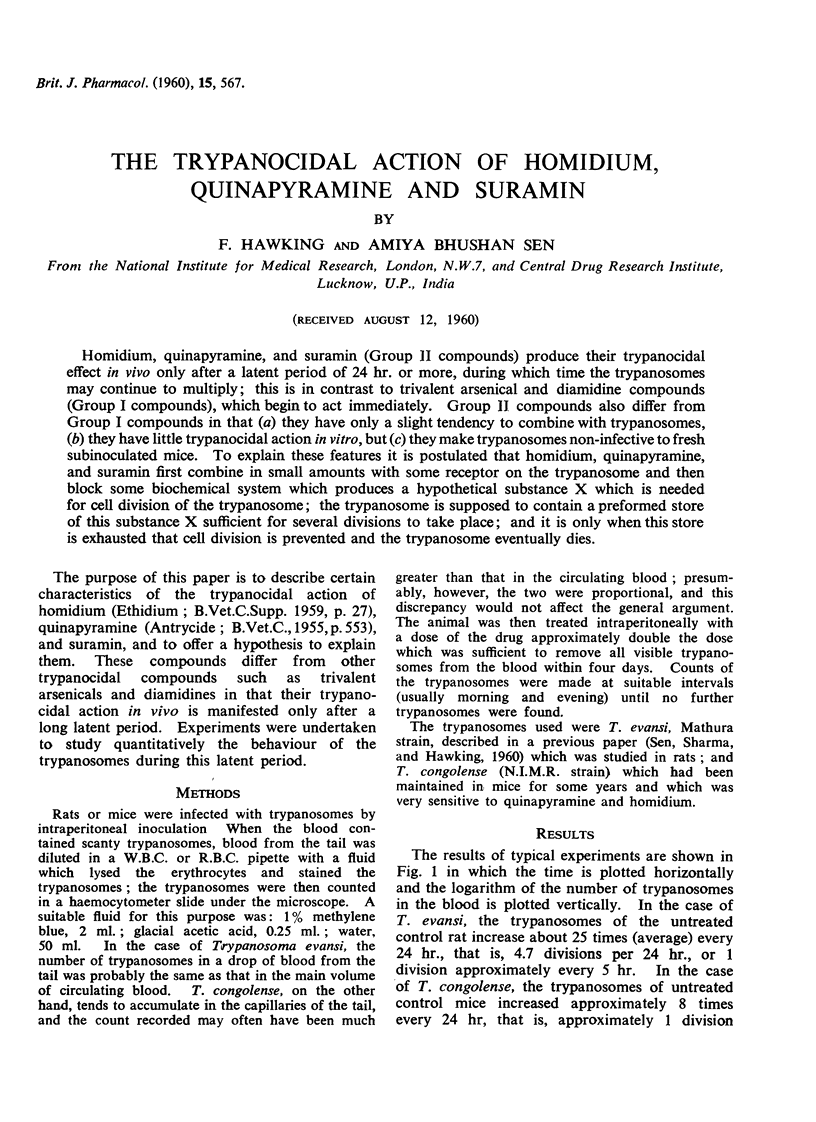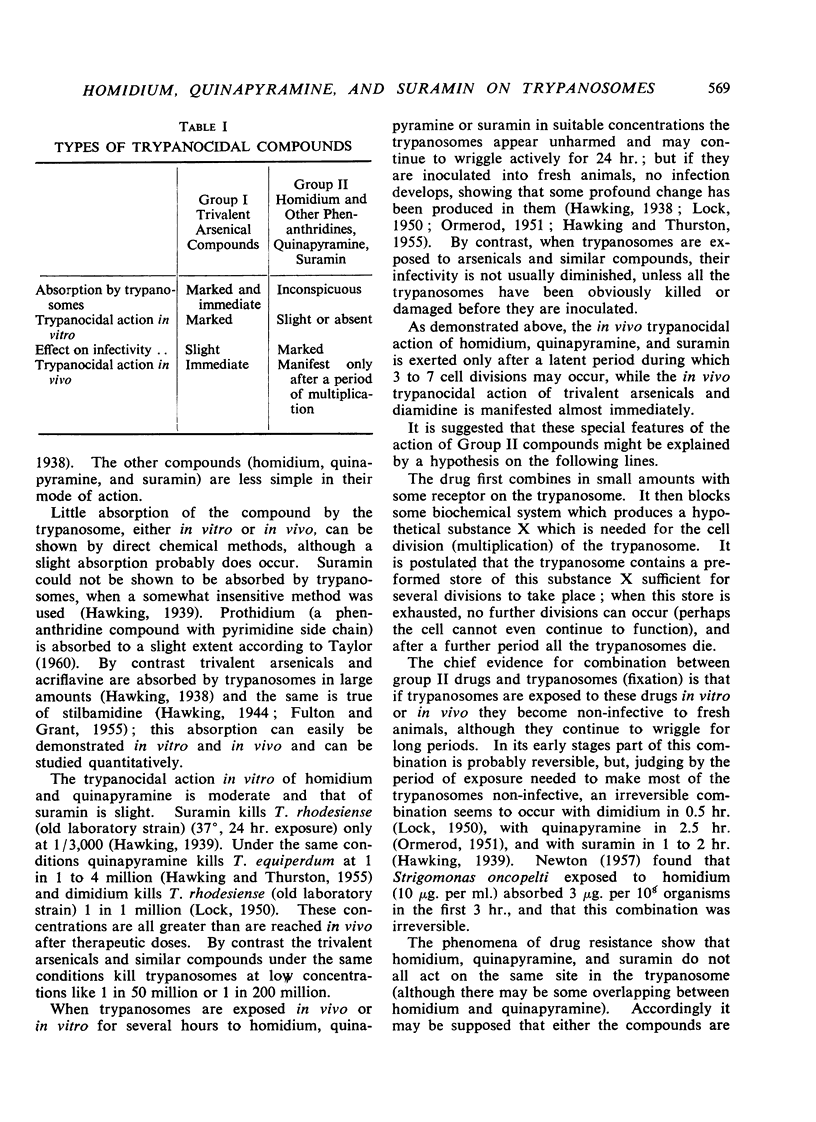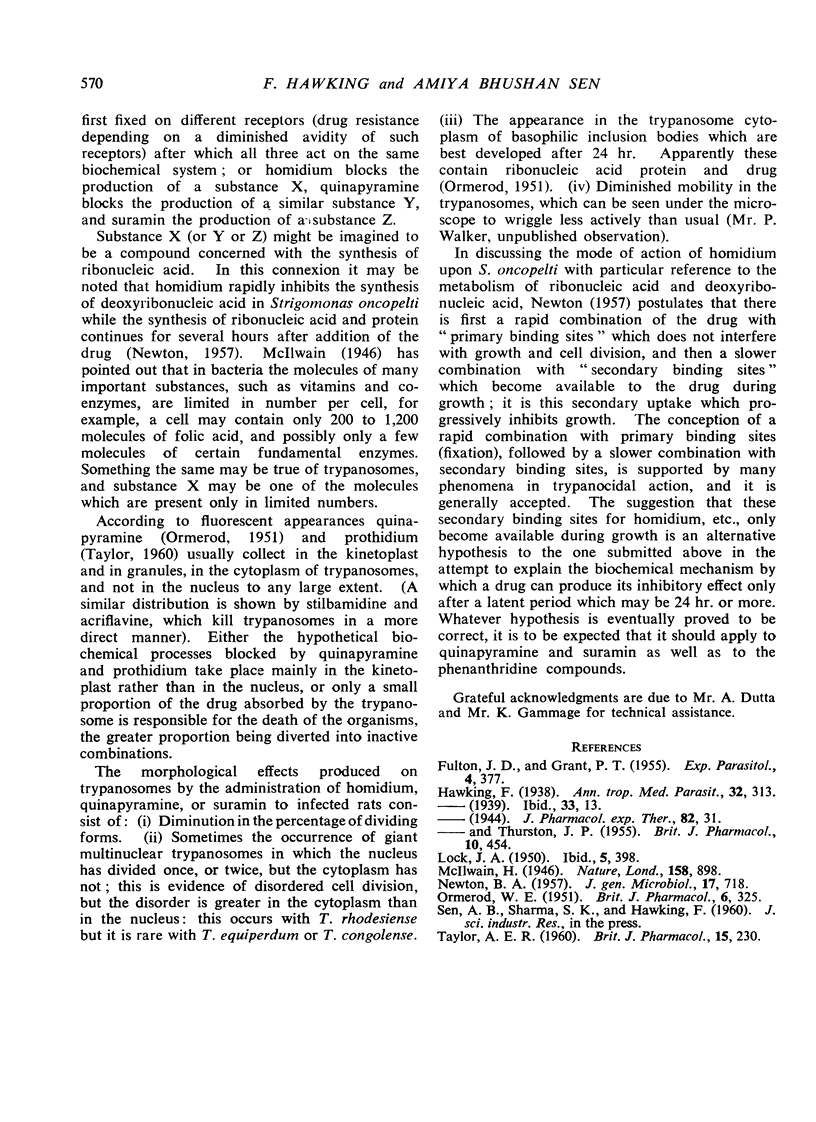Abstract
Homidium, quinapyramine, and suramin (Group II compounds) produce their trypanocidal effect in vivo only after a latent period of 24 hr. or more, during which time the trypanosomes may continue to multiply; this is in contrast to trivalent arsenical and diamidine compounds (Group I compounds), which begin to act immediately. Group II compounds also differ from Group I compounds in that (a) they have only a slight tendency to combine with trypanosomes, (b) they have little trypanocidal action in vitro, but (c) they make trypanosomes non-infective to fresh subinoculated mice. To explain these features it is postulated that homidium, quinapyramine, and suramin first combine in small amounts with some receptor on the trypanosome and then block some biochemical system which produces a hypothetical substance X which is needed for cell division of the trypanosome; the trypanosome is supposed to contain a preformed store of this substance X sufficient for several divisions to take place; and it is only when this store is exhausted that cell division is prevented and the trypanosome eventually dies.
Full text
PDF



Selected References
These references are in PubMed. This may not be the complete list of references from this article.
- FULTON J. D., GRANT P. T. The preparation of a strain of Trypanosoma rhodesiense resistant to stilbamidine and some observations on its nature. Exp Parasitol. 1955 Jul;4(4):377–386. doi: 10.1016/0014-4894(55)90014-x. [DOI] [PubMed] [Google Scholar]
- HAWKING F., THURSTON J. P. The action of antrycide upon trypanosomes in vitro. Br J Pharmacol Chemother. 1955 Dec;10(4):454–455. doi: 10.1111/j.1476-5381.1955.tb00104.x. [DOI] [PMC free article] [PubMed] [Google Scholar]
- LOCK J. A. The chemotherapeutic action of phenanthridine compounds. IV. Activity in vitro. Br J Pharmacol Chemother. 1950 Sep;5(3):398–408. doi: 10.1111/j.1476-5381.1950.tb00589.x. [DOI] [PMC free article] [PubMed] [Google Scholar]
- NEWTON B. A. The mode of action of phenanthridines: the effect of ethidium bromide on cell division and nucleic acid synthesis. J Gen Microbiol. 1957 Dec;17(3):718–730. doi: 10.1099/00221287-17-3-718. [DOI] [PubMed] [Google Scholar]
- ORMEROD W. E. The mode of action of antrycide. Br J Pharmacol Chemother. 1951 Jun;6(2):325–333. doi: 10.1111/j.1476-5381.1951.tb00646.x. [DOI] [PMC free article] [PubMed] [Google Scholar]


